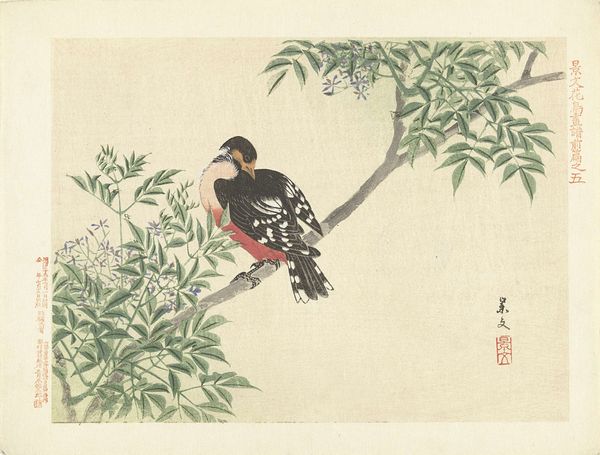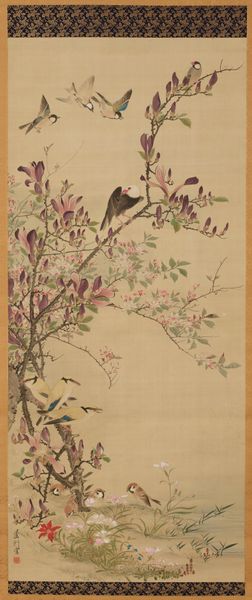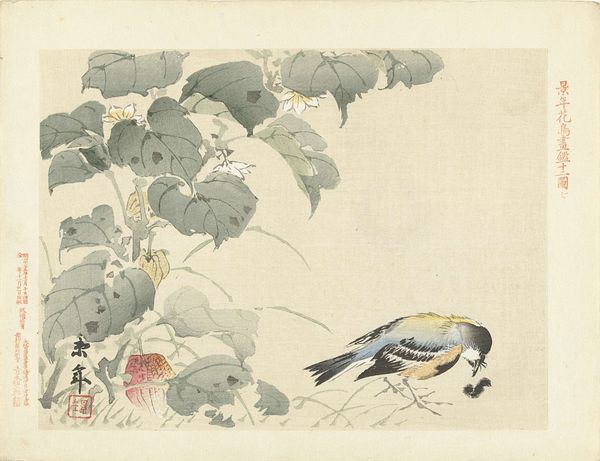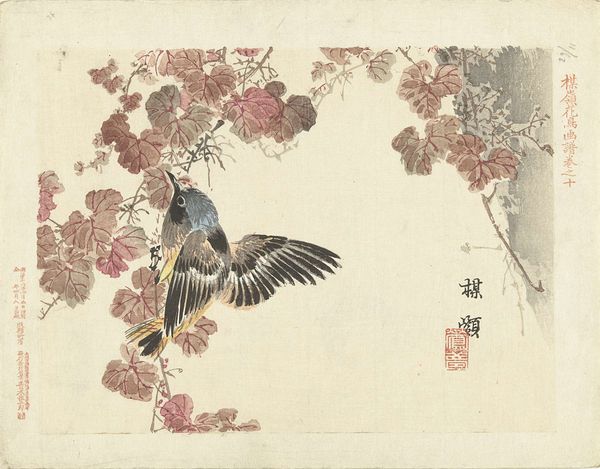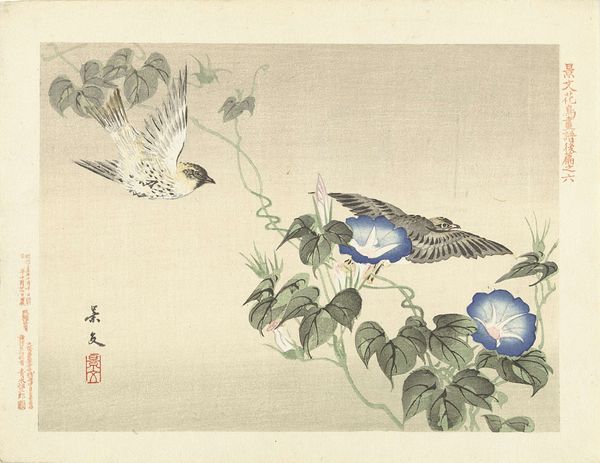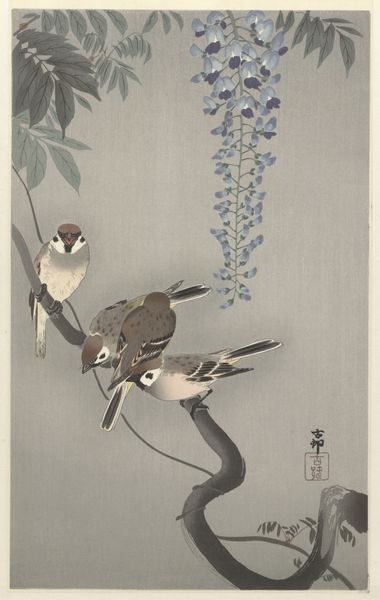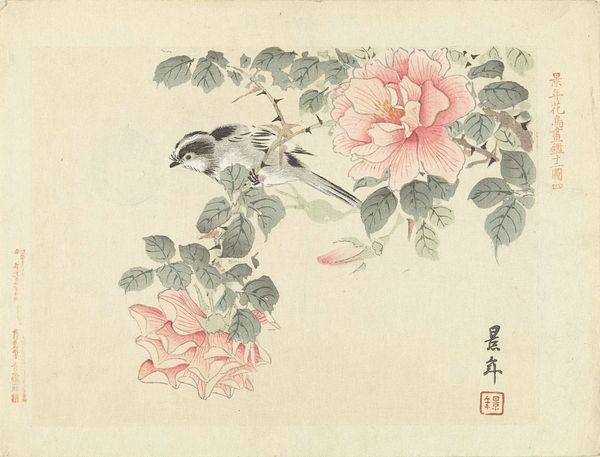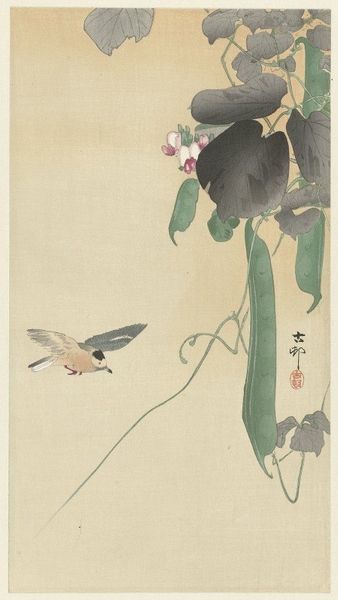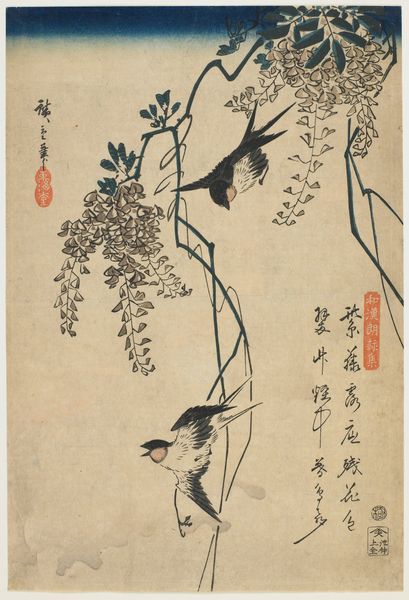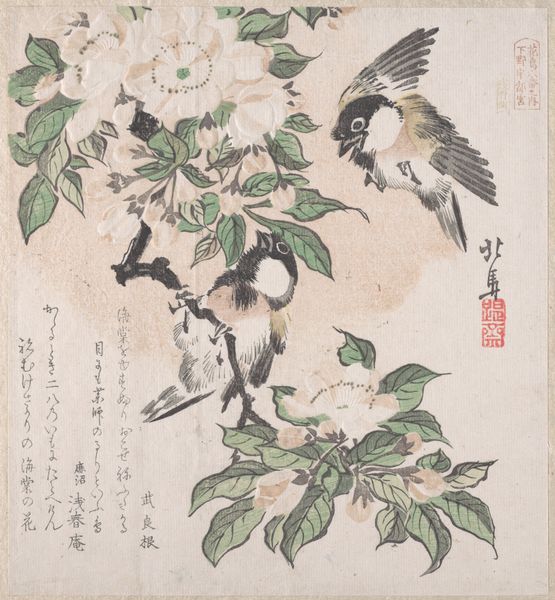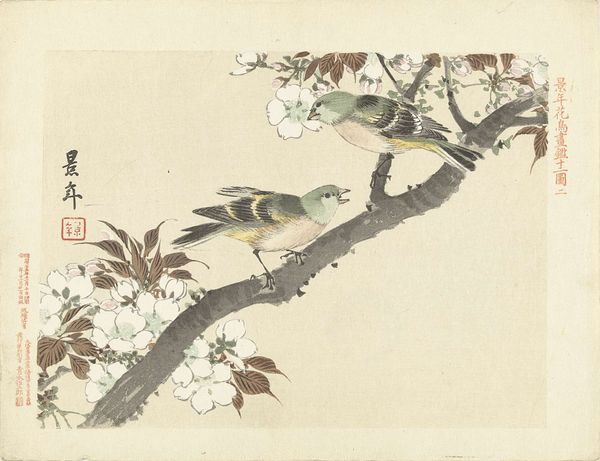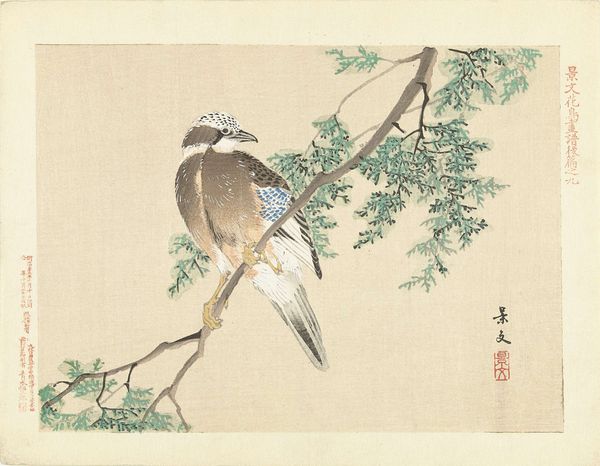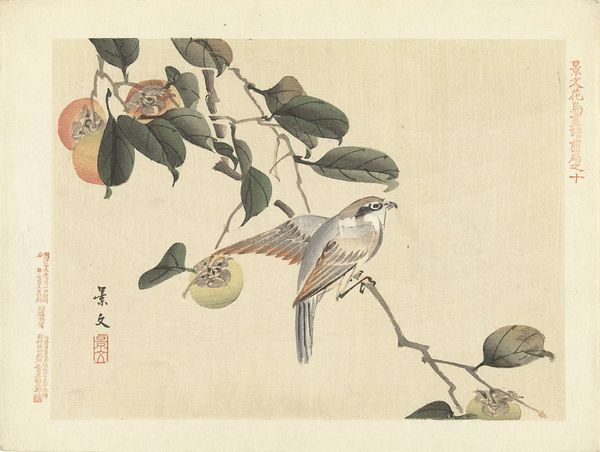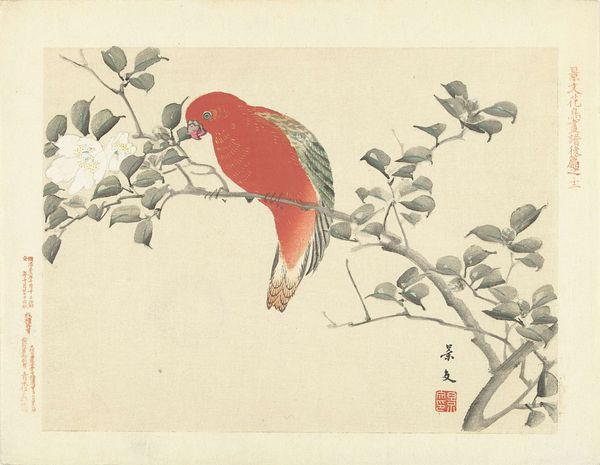
Dimensions: 7 1/16 x 9 5/16 in. (18 x 23.6 cm) (image)8 7/8 x 10 1/4 in. (22.5 x 26 cm) (sheet)
Copyright: Public Domain
Curator: Welcome. Today, we’re looking at a watercolor and ink painting on paper titled "(Sparrow on a wisteria branch)" by Kōno Bairei, created sometime between 1859 and 1895. It’s part of the collection at the Minneapolis Institute of Art. Editor: My first impression is one of lightness. There’s an almost fragile quality to the rendering, especially the soft gradation of colors. Curator: Absolutely. Bairei’s control over the medium is evident in the delicate brushwork and how he captures light. Note the precise use of line to define the forms of the sparrow and the wisteria. How do these formal elements structure our perception? Editor: For me, the composition evokes themes of nature, beauty, and the ephemeral. Consider wisteria's significance in Japanese art, symbolizing humility and love, often adorning homes. The sparrow, so common yet vividly present, reminds me of resilience and the beauty found in the everyday. It’s interesting how it invites a deeper connection to our surroundings. Curator: Precisely! The artist masterfully orchestrates color. The vibrant purples and greens of the wisteria contrast subtly with the sparrow’s earth tones. And the unpainted ground is crucial: the use of negative space around the composition emphasizes the key components within the scene. Editor: I agree. But also it makes me think about how this piece reflects the complex relationship between nature and human culture. The act of capturing this scene – the selection, the arrangement, and the skillful rendering of the subject—all speak to our desire to engage with the natural world, which in itself can lead to conversations about conservation and our impact. Curator: Indeed, the seemingly simple composition of the work, a few carefully placed elements, belies the underlying skill needed to convey such nuance. Bairei understood the poetics of subtraction. Editor: As a whole, the image resonates as more than just a depiction of a bird on a flower. It's a cultural artifact, reflecting specific aesthetic and philosophical values embedded within the time it was created, but the simplicity continues to speak volumes today. Curator: And that skillful visual language makes the painting something so special, even after all this time. Editor: An open window for historical interpretation that offers much room for contemporary questions to bloom, yes.
Comments
minneapolisinstituteofart about 2 years ago
⋮
Wisteria blooms in late spring and is one of the most beloved flowers in Japan. As a woody vine, it is often trained to cover arbors constructed in temples and shrines. The long, pendulous racemes hanging over these structures create a spectacular display. Here, the artist shows a spray of wisteria with a common sparrow, a sight one might enjoy while seated in an arbor. Køno Bairei, an artist whose artistic lineage descends from the great 18th century naturalist painter Maruyama Økyo (1733-95), depicted the sparrow and wisteria in astonishing detail.
Join the conversation
Join millions of artists and users on Artera today and experience the ultimate creative platform.
